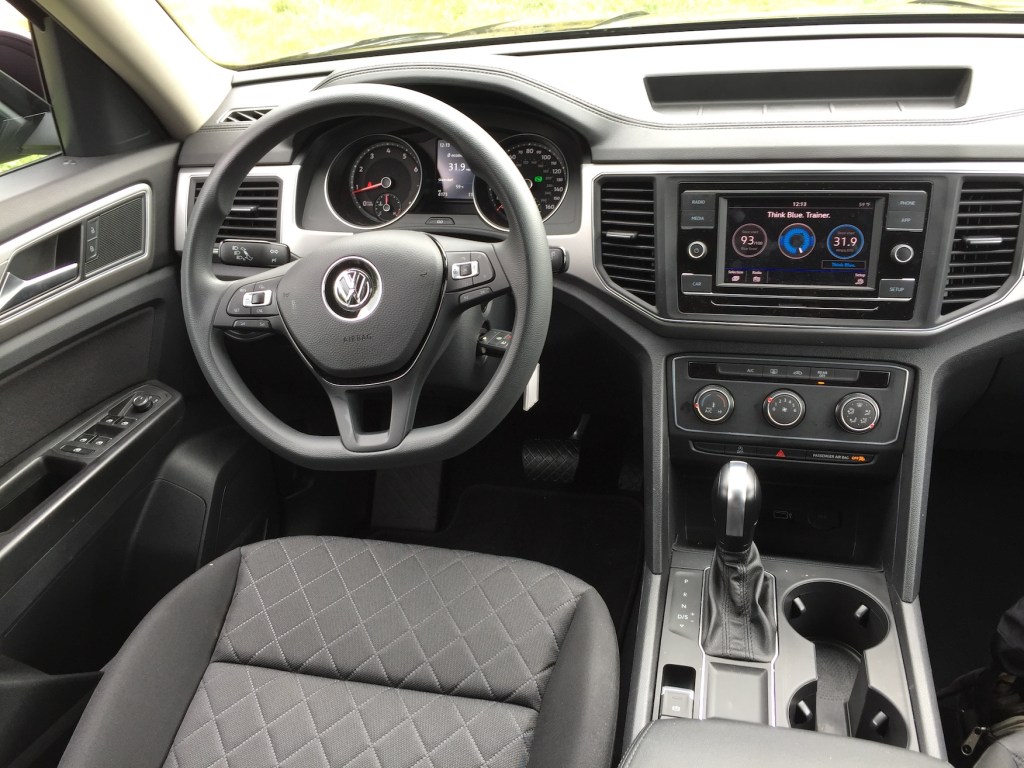Just over three years ago, the public learned that Volkswagen had employed sophisticated software that helped the automaker’s vehicles beat diesel emissions testing for its landmark TDI engines.
New TDI cars were pulled from the market, and bureaucrats forced buy-back programs for VW consumers who wanted redress. The scandal created a huge black eye for the company – the world’s largest automaker – with compensation costs now exceeding $20 billion. Many people wondered if the brand would be permanently tainted.
We have our answer: No.
Consumers are not giving up on the brand’s driving panache, the Germanic feel of its mass-market cars, or the promise of what VW will do with its second chance in the global marketplace. For American drivers, all it has taken is VW’s finally jumping into the exploding crossover market with competent entries.
Last fall, the second-generation compact Tiguan debuted. Roomier, more fuel-efficient, and better-looking, the latest Tiguan has tripled sales so far this year.
This spring, the three-row, full-size, Tennessee-built Atlas debuted to wide acclaim. Along with the Tiguan, VW crossovers now represent 50 percent of the brand’s American sales.
The Atlas joins a hotly contested segment that for several years has been led by Ford’s Explorer, a crossover that was clearly the visual template for the Atlas. Other hot sellers in this 6/7/8-passenger segment: Toyota Highlander, Honda Pilot, Chevy Traverse, and Subaru’s all-new Ascent.
VW will soon sell a two-row version of the Atlas (replacing the Touareg) to compete with models like the Ford Edge, the Nissan Murano and the Jeep Grand Cherokee.
With a wide-track stance and the second-longest wheelbase in the segment (only the Traverse has a longer wheelbase) the Atlas immediately establishes that it produces a stable, composed ride supported by a fully independent suspension that renders agile handling.
The Atlas weighs 4,300 pounds in front-drive format (4,670 with optional V-6 engine and 4Motion AWD), making the VW among the lightest 7-passenger crossovers.
This is good, since the standard 2.0-liter turbocharged four-cylinder engine makes only 235 hp. Teamed with eight-speed automatic used on all models, the Atlas 2.0T is actually quicker than its V-6-powered sibling (276-hp) because it has shed the extra pounds.
The Explorer, Traverse, Mazda CX-9, the Highlander and now the Atlas all offer standard four-cylinder power – unthinkable barely 10 years ago. More seasoned drivers will remember the four-cylinder engines of decades ago as crude powerplants that shook, rattled, and were loud under heavy throttle.
No more.
Computer-aided design, better internal tolerances and lighter materials in conjunction with sophisticated engine-controls, direct injection, turbocharging, and yes, multi-speed transmissions, have all combined to create efficient, powerful four-cylinder motors that are pleasing to drive. EPA estimates for the front-drive Atlas are 22/26-mpg (AWD models are 18/25-mpg); we saw 27-30-mpg during our time together with a base S-model.
While buyers have generally abandoned minivans, the best full-size crossovers embrace many of the minivan’s best attributes – numerous beverage slots, out-sized load capacity, easy access to third row seating, etc.
The Atlas nails this effort.
Seatbacks fold flat to create aircraft-carrier-style load surfaces; the second row offers a flat load floor for three-across feet plus spacious knee and head room, while the seatback flips forward to enable passenger access to an adult-friendly third row. Wraparound doors make ingress and egress simple. Doors open wide. The cabin is hushed at road speeds.
Best of all, you are going to like driving the Atlas. Sensations from the helm are very VW-ish; the steering is nicely weighted and responsive, the cloth seating surfaces are near-perfect (and more seasonably comfortable than leather or the man-made hide that sometimes suffices). Plus, the controls are human-friendly and don’t require an overnight date with the owner’s manual.
Stop-start is standard but defeatable, while Apple/Android compatibility is included.
Pricing starts at $30,750 for a front-drive S Atlas, less expensive than all rivals except the entry-level Traverse. An S-model with the V-6 is $32,150, while AWD is only available with the larger engine, for now, and adds $1,800.
Mid-level SE trim ($3,100 over S) seems to offer the most bang for the buck, including power driver’s seat, keyless access and ignition, heated front seats, rain-sensing wipers, blind-spot detection, rear cross-traffic sensing, and larger entertainment screen.
The Technology Package ($2,100) adds lane-keeping assist, adaptive cruise, and emergency braking action.
VW promises that it will have three all-electric vehicles for sale here in two years, and is considering a made-in-America pickup version of the Atlas that would mimic Honda’s Ridgeline.
With VW recapturing lost market share here via vehicles like this capable Atlas, it is clear that the brand has moved past diesel-gate and is poised for a bright future.
Send questions/comments to the editors.





Comments are no longer available on this story